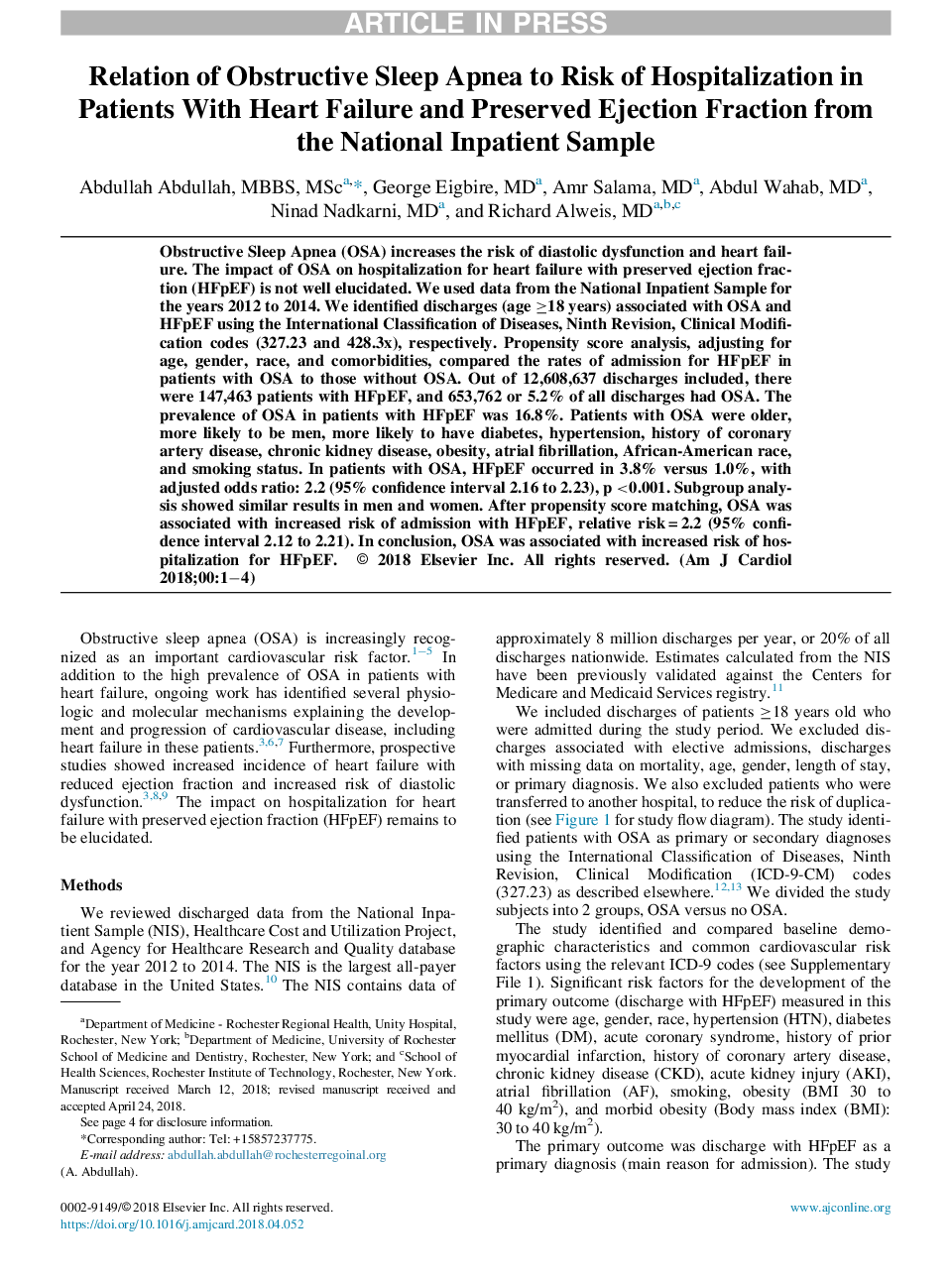| Article ID | Journal | Published Year | Pages | File Type |
|---|---|---|---|---|
| 8962744 | The American Journal of Cardiology | 2018 | 4 Pages |
Abstract
Obstructive Sleep Apnea (OSA) increases the risk of diastolic dysfunction and heart failure. The impact of OSA on hospitalization for heart failure with preserved ejection fraction (HFpEF) is not well elucidated. We used data from the National Inpatient Sample for the years 2012 to 2014. We identified discharges (age â¥18 years) associated with OSA and HFpEF using the International Classification of Diseases, Ninth Revision, Clinical Modification codes (327.23 and 428.3x), respectively. Propensity score analysis, adjusting for age, gender, race, and comorbidities, compared the rates of admission for HFpEF in patients with OSA to those without OSA. Out of 12,608,637 discharges included, there were 147,463 patients with HFpEF, and 653,762 or 5.2% of all discharges had OSA. The prevalence of OSA in patients with HFpEF was 16.8%. Patients with OSA were older, more likely to be men, more likely to have diabetes, hypertension, history of coronary artery disease, chronic kidney disease, obesity, atrial fibrillation, African-American race, and smoking status. In patients with OSA, HFpEF occurred in 3.8% versus 1.0%, with adjusted odds ratio: 2.2 (95% confidence interval 2.16 to 2.23), p <0.001. Subgroup analysis showed similar results in men and women. After propensity score matching, OSA was associated with increased risk of admission with HFpEF, relative riskâ¯=â¯2.2 (95% confidence interval 2.12 to 2.21). In conclusion, OSA was associated with increased risk of hospitalization for HFpEF.
Related Topics
Health Sciences
Medicine and Dentistry
Cardiology and Cardiovascular Medicine
Authors
Abdullah MBBS, MSc, George MD, Amr MD, Abdul MD, Ninad MD, Richard MD,
